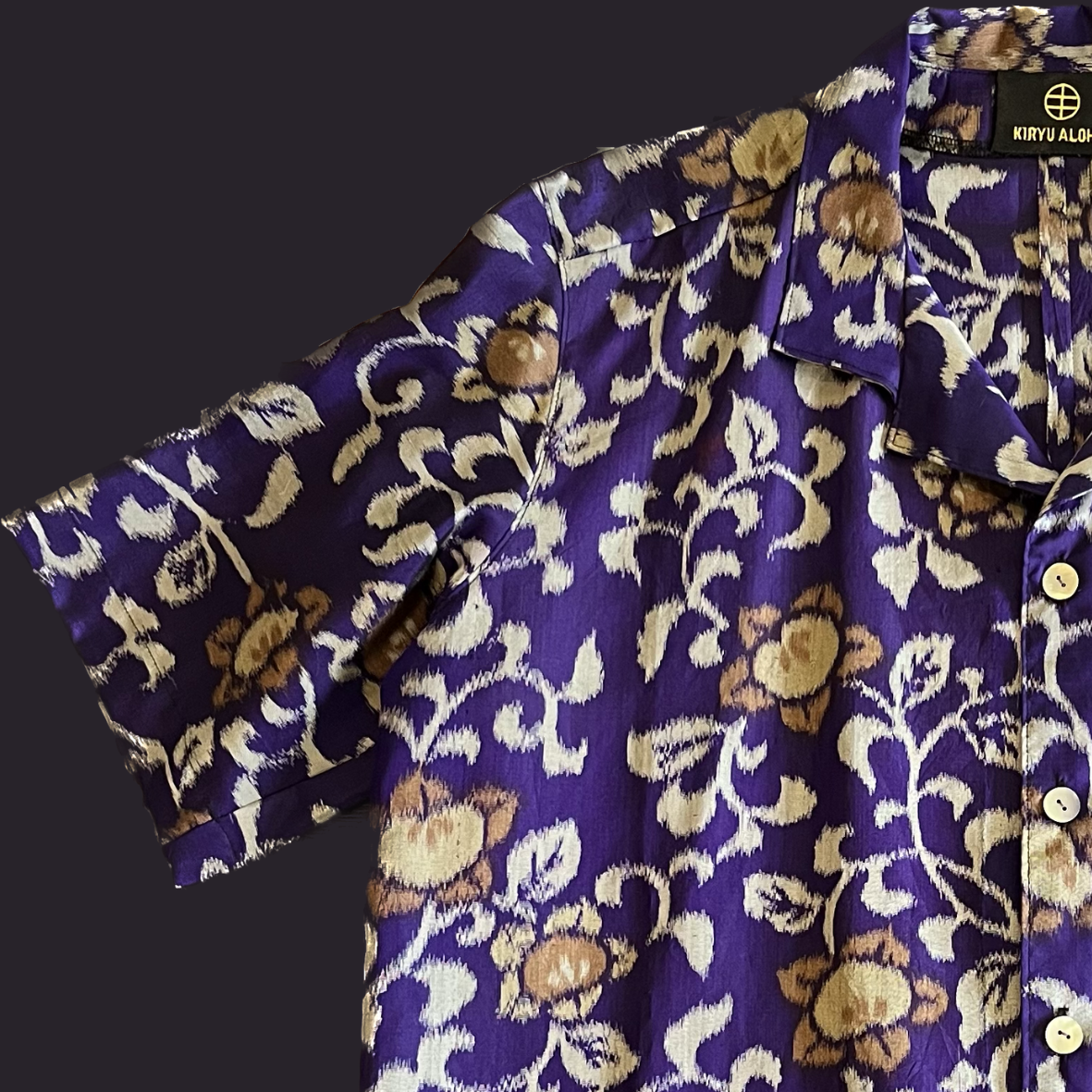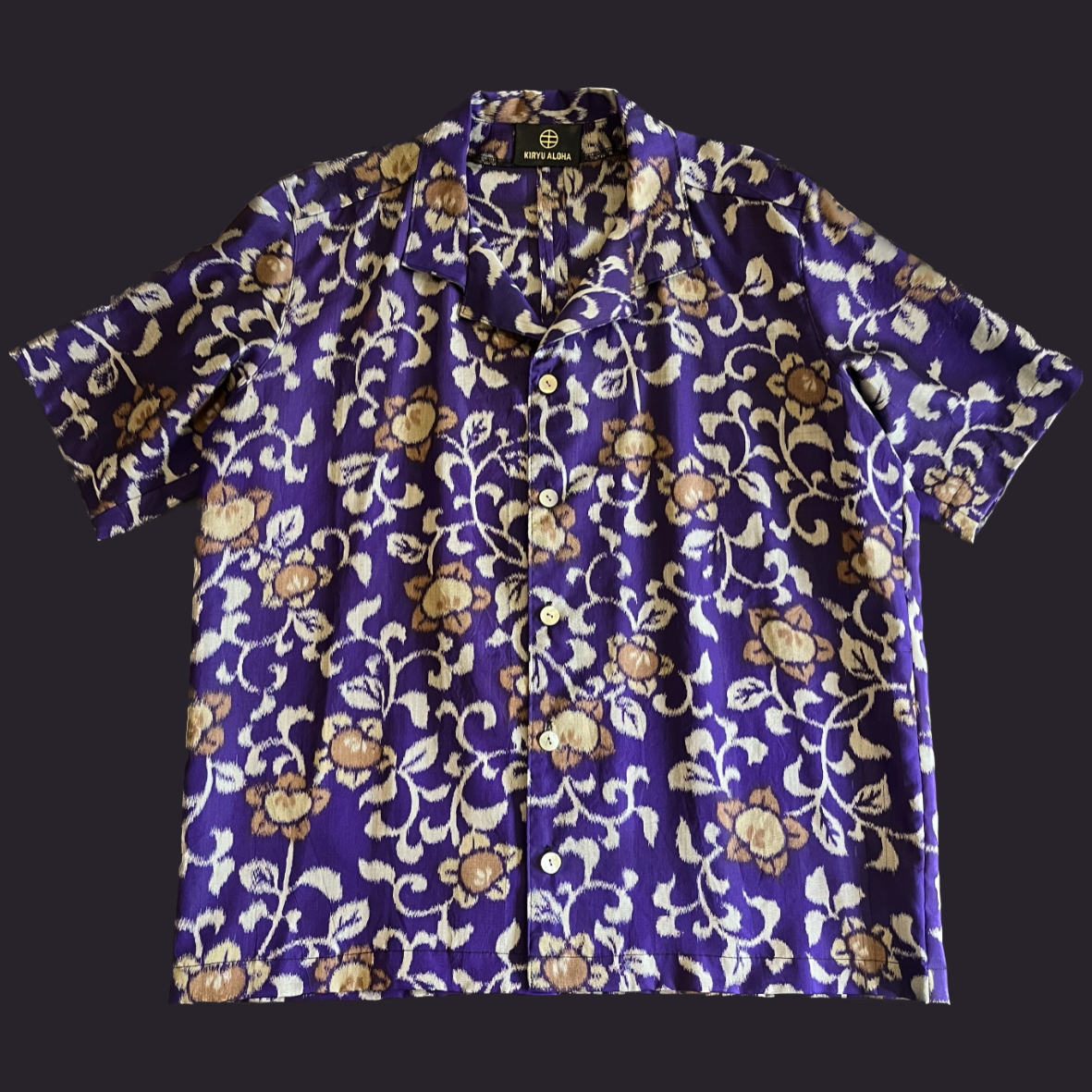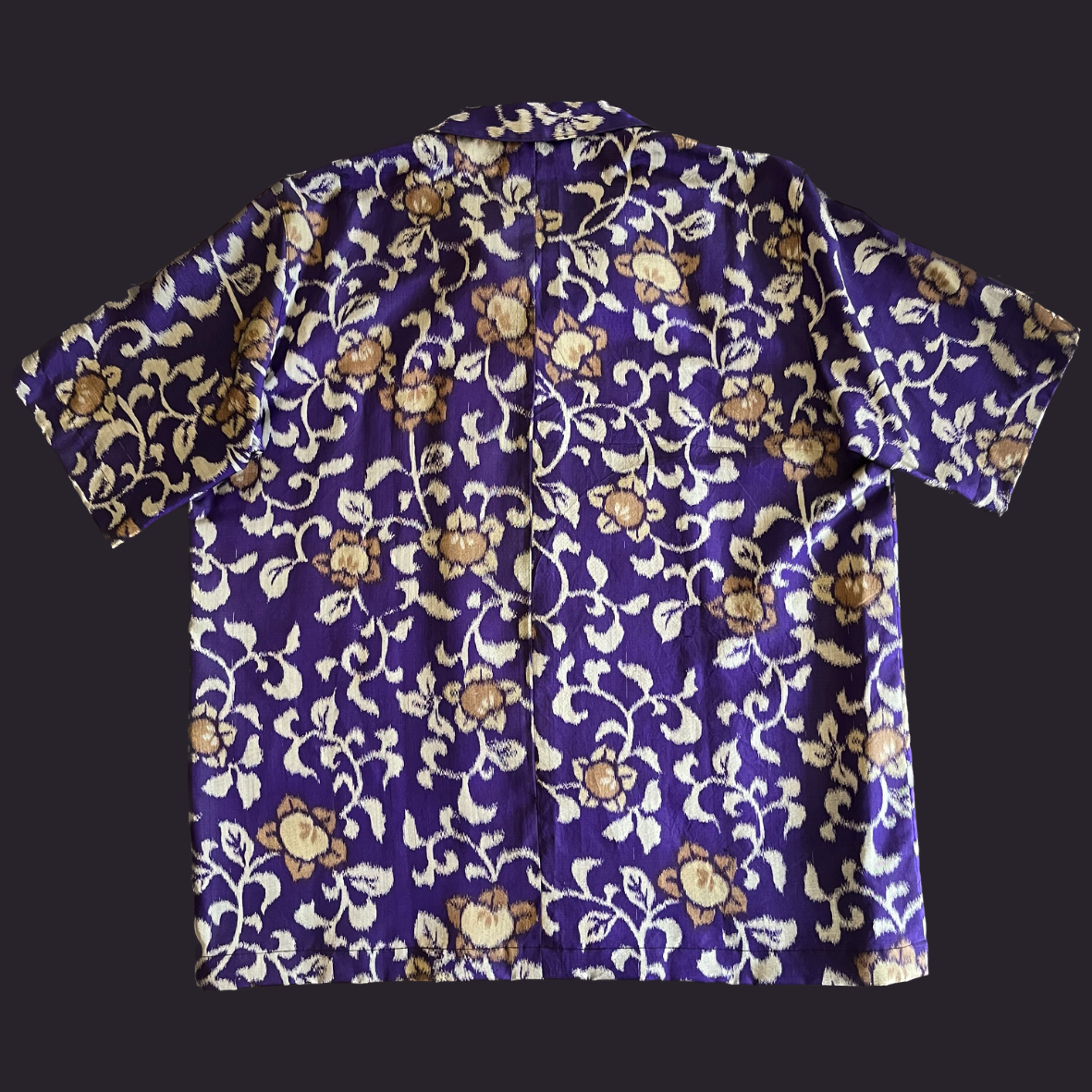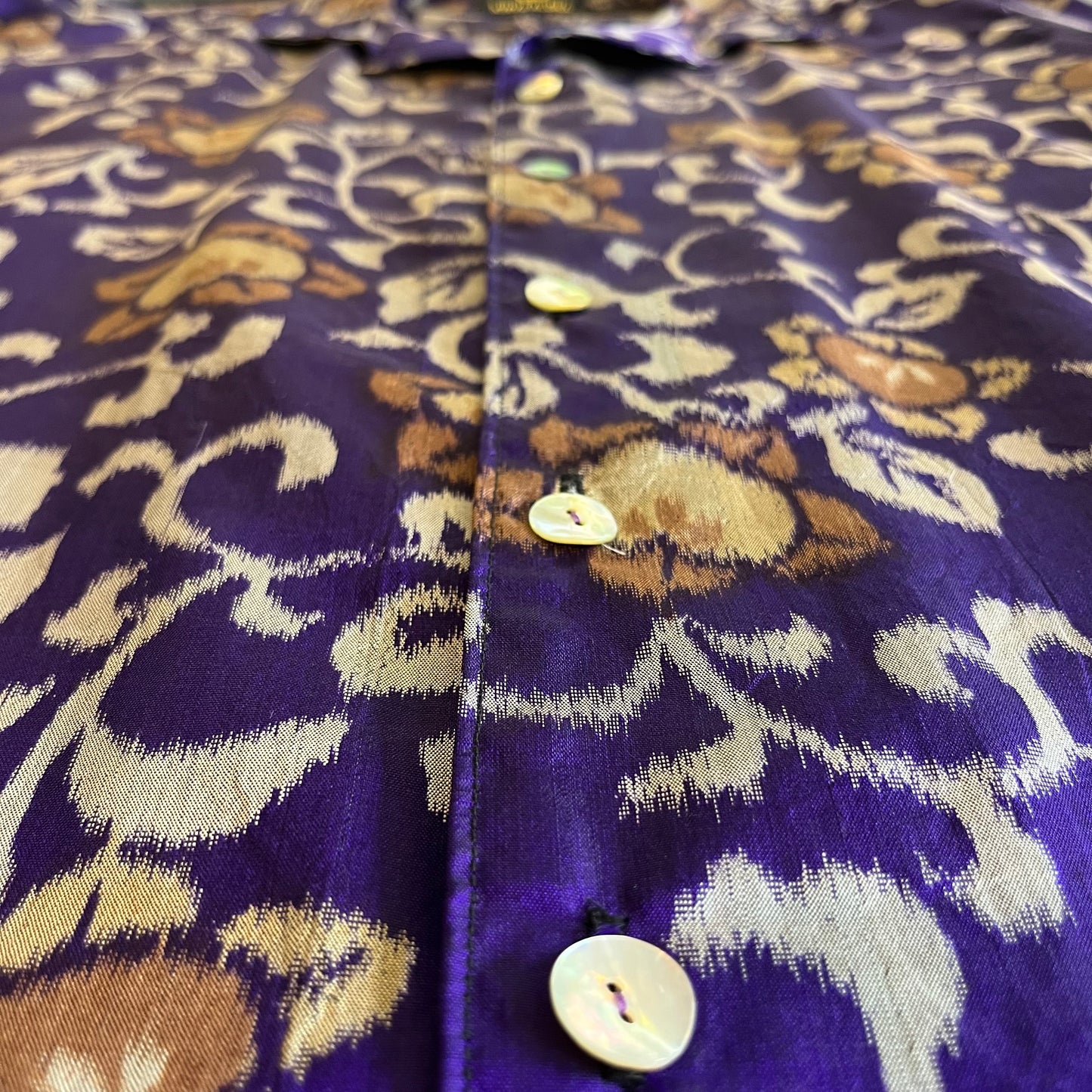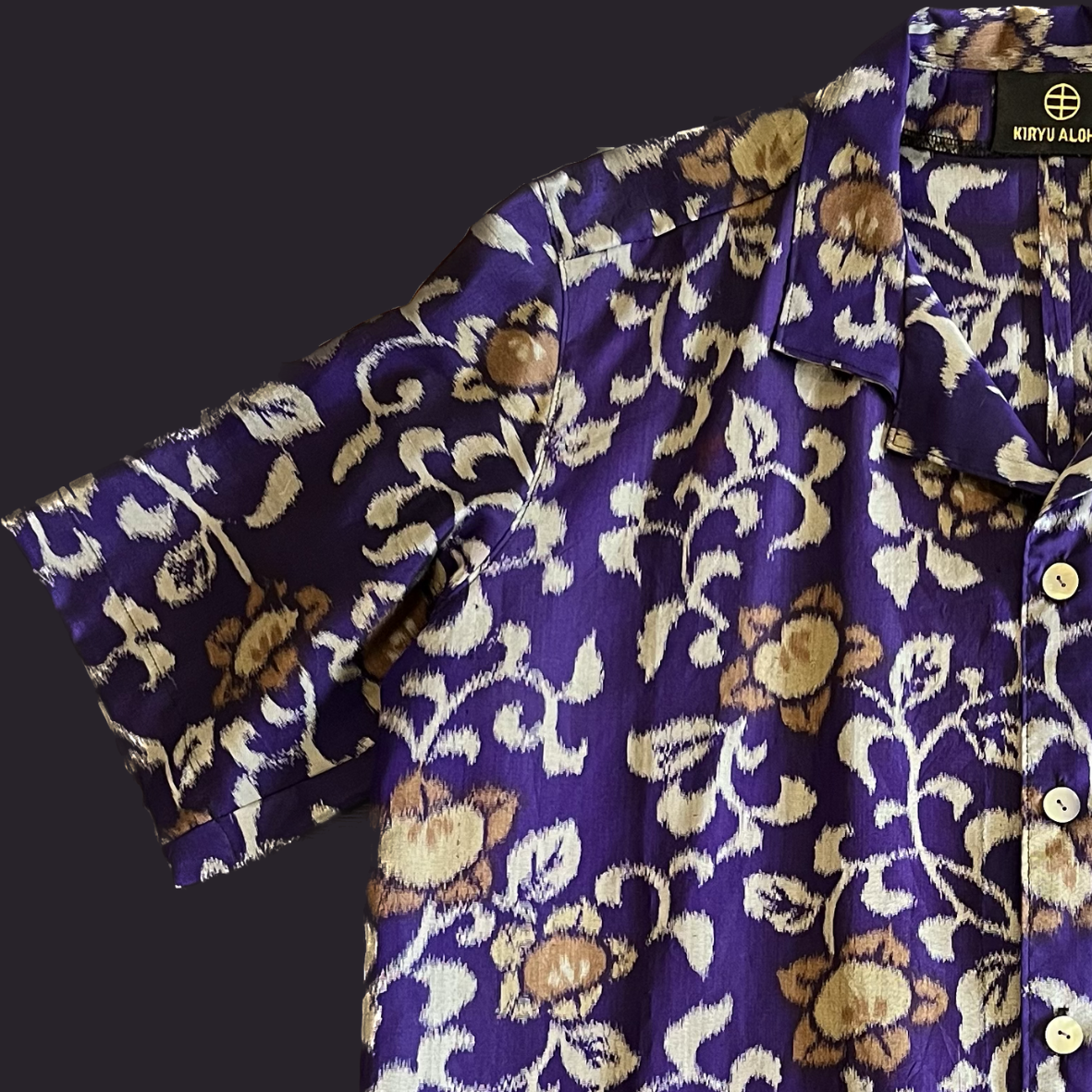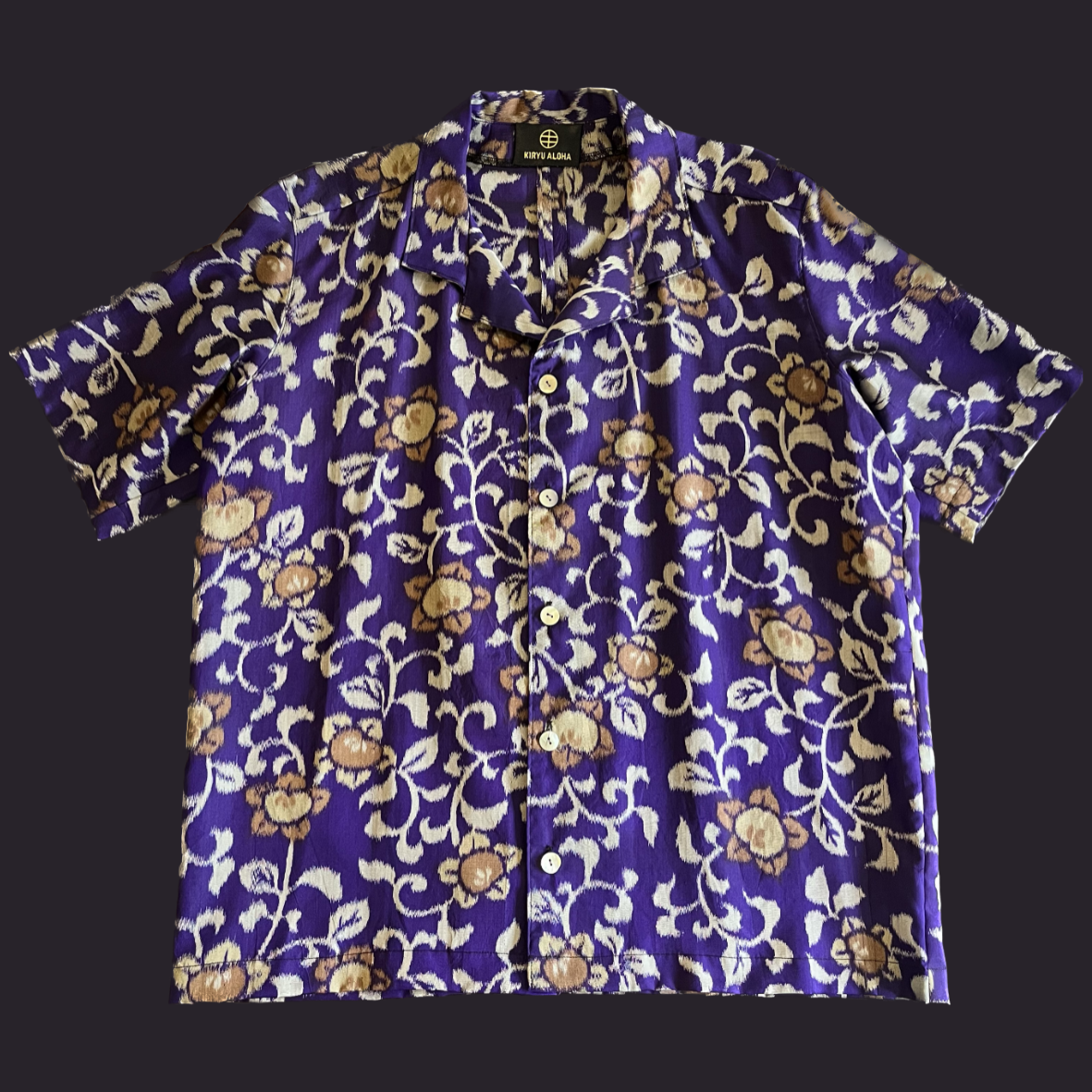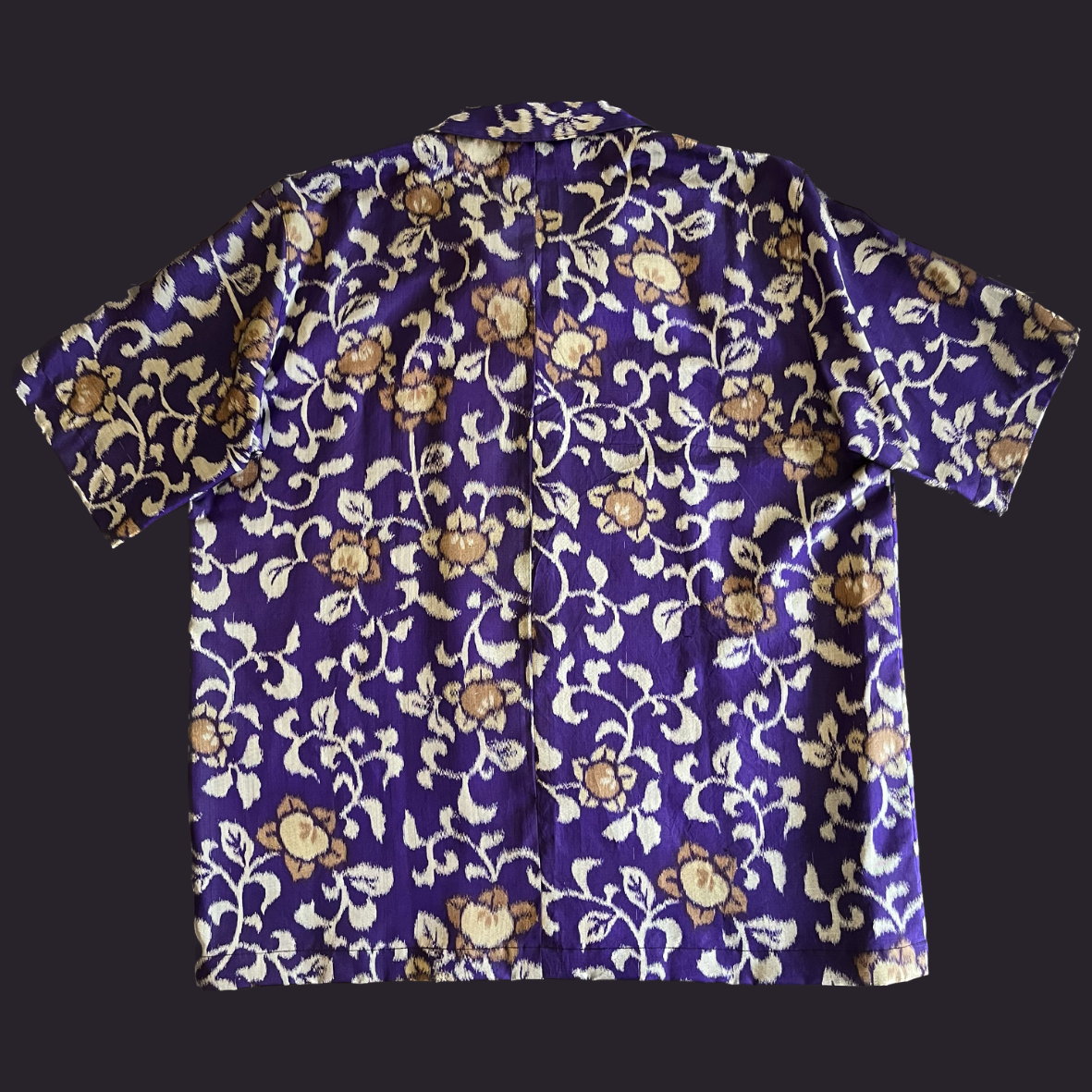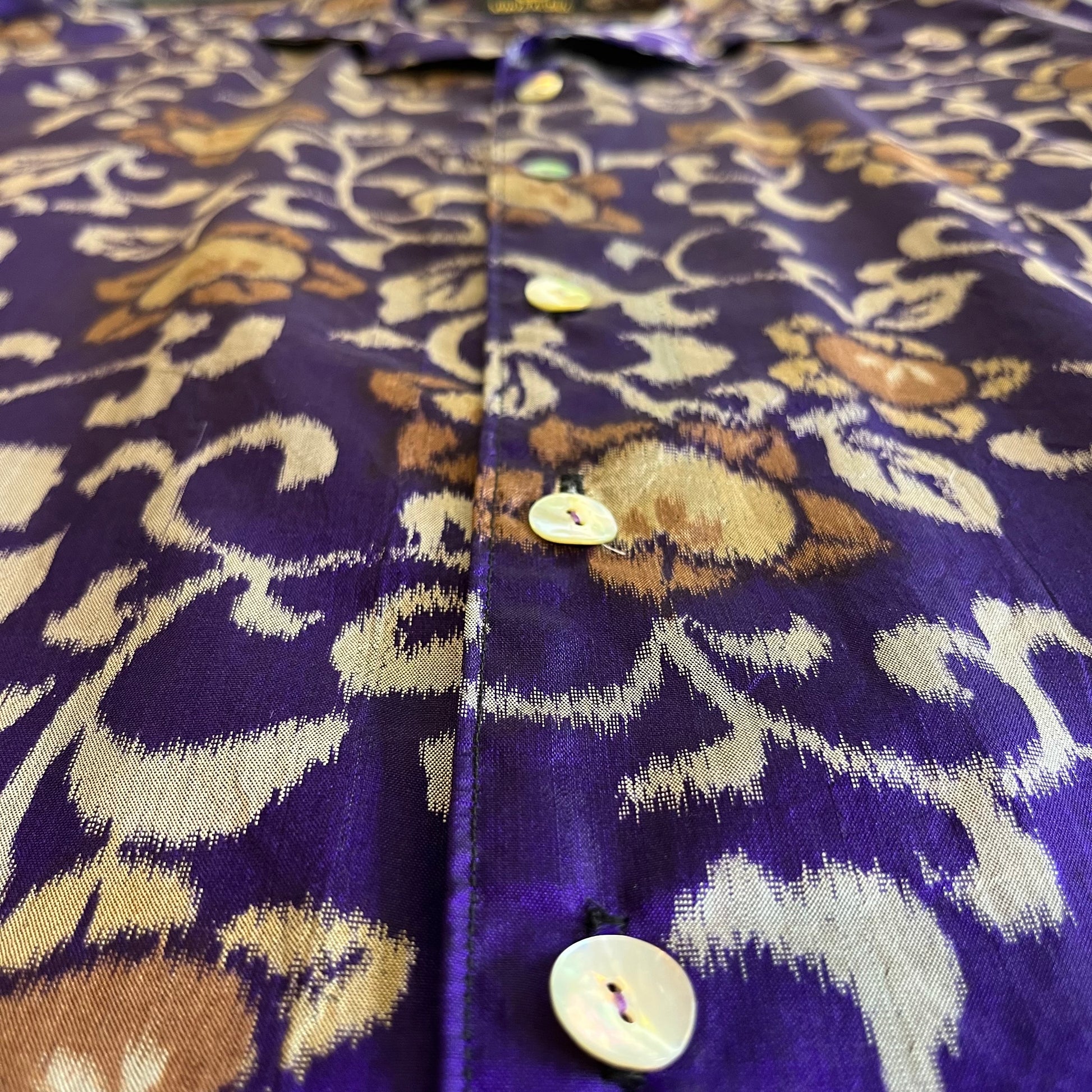KIRYU ALOHA
Meisen Tachibana Arabesque L
Meisen Tachibana Arabesque L
Couldn't load pickup availability
From the Meisen kimono, which has a tachibana pattern woven in an arabesque style.
In ancient Japan, the tachibana (mandarin orange) was a symbol of "prosperity" and "longevity" and was believed to be a plant that grew wild in utopias.
Arabesque patterns are also auspicious patterns with meanings of ``prosperity of descendants'' and ``longevity'' due to the endless intertwining of vines.
The ground color purple is ``Nisemurasaki,'' a purple that became popular in the Kamakura and post-Kamakura eras as a color close to ``true purple,'' the most noble color.
Purple, which was all the rage in the 1920s and 1930s when Taisho Romanticism and Showa Modernism flourished, is often a similar color.
Meisen - A plain -woven silk fabric using a technique called kasuri . This is a yarn-dyed textile that dyes the threads before they are woven. The warp threads are lined up at evenly spaced widths and are divided into upper and lower parts one by one, and the weft threads are threaded between them, which is repeated many times. It is characterized by the pattern being woven by varying the colors of the warp and weft threads, giving it a smeared texture. Meisen was all the rage during the Taisho and Showa periods, but today it is a valuable textile that is only produced in small numbers.
Length 72cm/Width 60cm/Shoulder width 48cm/Sleeve length 27cm
size chart
size chart
| size | M | L | LL |
| Length | |||
| Sleeve Length | |||
| waist | |||
| chest circumference |
*Since it is hand-sewn, there may be slight differences depending on the product.
Instructions (please confirm by all means)
Instructions (please confirm by all means)
・Because we use vintage kimono, the fabric of the product may be weaker than synthetic fibers. Be careful not to pull too much or apply too much force. (In the unlikely event that the item is torn, cracked, or frayed, we can also provide maintenance services.For more information, please see `` Maintenance ''.)
・Although the item is washed and pre-shrunk before being tailored, there may be slight discoloration or shrinkage due to sweat, etc. By wearing innerwear, you can prevent sweat from adhering to your clothing, shrinking it, and preventing it from deteriorating.
・As we use vintage kimonos, there may be discoloration that cannot be removed, dye blemishes, or weaving difficulties. Please understand this and enjoy the texture of the kimono.
delivery
delivery
[Preta]
Ships within 7 business days from order
[Custom-made product]
Usually ships in about 1 month from order
guarantee
guarantee
All products priced at 55,000 yen (tax included) or more are guaranteed for one year from the date of purchase.
For details, please refer to " Maintenance and Warranty ".
